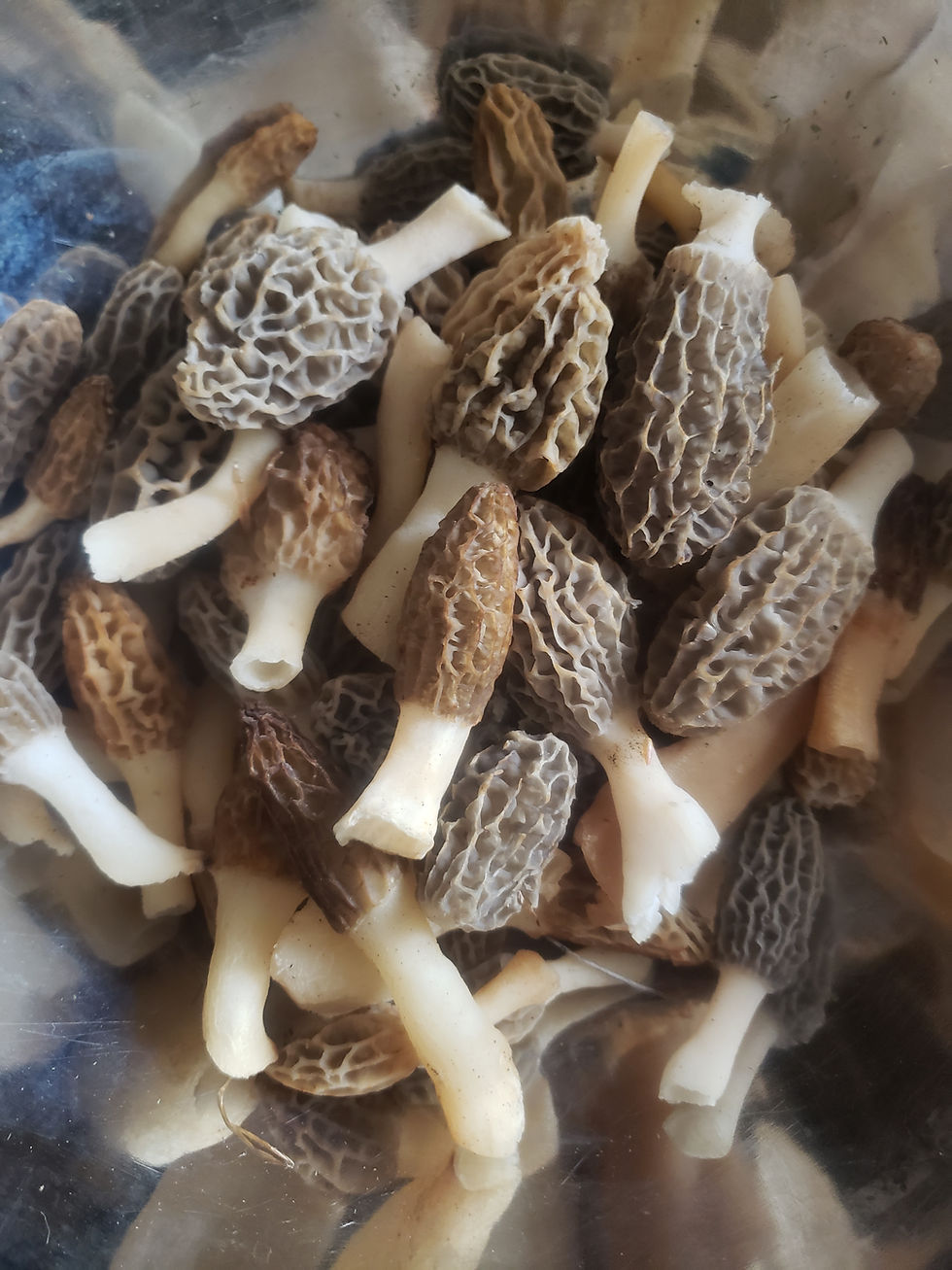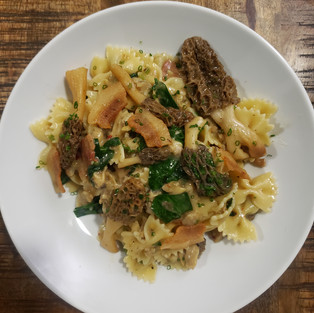The secret to good Morels
- Jonathan Till

- Apr 29, 2020
- 2 min read
When the ground is moist from the spring rains and the earth finally hits 55 degrees foragers grab their gear and head out for one of the ultimate treasure hunts.

Few mushrooms will get a forager as excited as morels do. These are the first heavily saute after mushroom of the year and many chefs from all walks highly prize these strange looking, yet highly yet alluring mushroom. According to the essay MORELS AND HOW TO FIND THEM Written by Tim Geho, there 5 different types of morels that grow in the mid Atlantic region. Black, white, grey, blonde, and half free are all edible and have unique properties of their own, but its the black and the blonde morel that are the prize ones that are highly coveted. This year has been an exceptionally good year for morels in the DMV area (DC, Maryland, Virginia)

You could ask 10 different foragers how to find morels and you'd get 11 answers and most of them probably lies. Morels are both saprophytic and mycorrhizal meaning that they help break down decaying matter on the forest floor while having a beneficial relationship with certain trees. Here in the DMV area I find that the best places are black Poplar trees either on a hillside or running along a gully. Look for clusters of 3 or more Poplar trees with fallen logs near by about 3-7 feet away from the base of the tree. Look carefully and let you eyes adjust to the earth. It will take some practice but once you're eye is trained to spot the outline of a morel they become easier to see. Once you find a morel look carefully around that spot. There's usually more than one, I find this especially true with the blonde Morel.
Recently Heritage foraging was included for its first time ever in the DCist article called Super Rare Morel Mushrooms Are Springing Up Around The Region (big thanks to Nevin Martell). This is a great article outlining a little more in depth about morel foraging in the DC area. It includes comments and tips from not only Heritage Foraging, but several other well know chefs, foragers, and experts in the area.
Now that you have an idea of how to find morels here's a couple quick tips on how to prepare/cook/store these delightfully umami bomb mushrooms.
Wash morels in cool water, gently picking out of the water and shaking excess off and drying on a paper towel (never pour out into a colander, you'll pour the dirt back on top of them
Never put mushrooms in an air tight container, this allows harmful bacteria to flourish on your mushroom breaking them down quicker and can make you sick
Cook Morels THOROUGHLY! Morels contain a toxin that is broken down in the cooking process that will make you sick if you eat raw.
True morels are completely hollow, which makes them great for stuffing
Pasta and morels...yep do that
Dried morels hold up incredibly well and will last a long long time.
Morels can hang with the heavy hitters just as well as the delicate flavors. Short ribs, Foie Gras no problem! Halibut, Dover Sole super delightful. Go nuts!














Comments